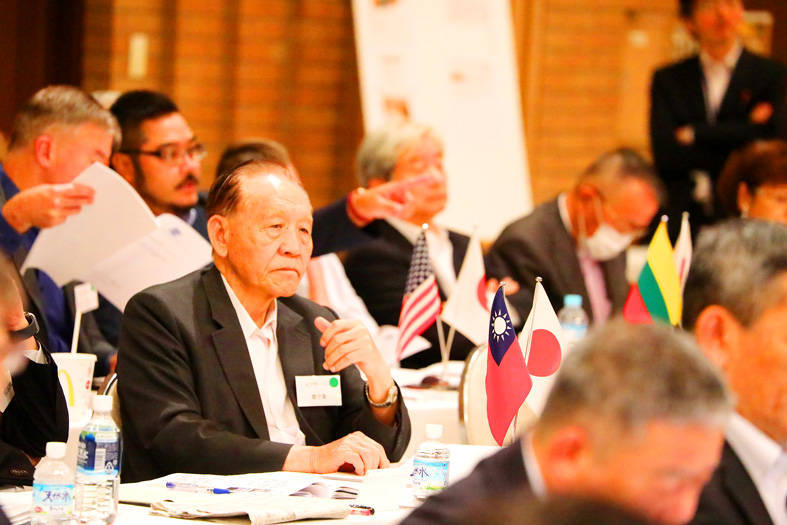《TAIPEI TIMES》Japan think tank’s mock Chinese invasion ends in truce

Institute for National Defense and Security Research chairman Huoh Shoou-yeh, center, attends an event held by the Japan Forum for Strategic Studies in Tokyo on Sunday. Photo: CNA
By Jonathan Chin / Staff writer, with CNA
A tabletop exercise conducted by a Japanese think tank simulating a Chinese invasion of Taiwan ended with the Chinese People’s Liberation Army (PLA) being cut off from logistics at sea and a deadlock on land, before the UN mediated an armistice.
The Japan Forum for Strategic Studies hosted the exercise in Tokyo on Saturday and Sunday in collaboration with military officials and analysts from Taiwan, the US and Japan. It was the third such simulation the think tank had conducted this year.
Taiwan’s participation in the exercise was a first.
The exercise simulated the PLA attacking the area from New Taipei City’s Bali District (八里) to Hsinchu’s Nanliao (南寮), said Su Tzu-yun (蘇紫雲), director of defense strategy and resources at the Institute for National Defense and Security Research (INDSR).
The tabletop scenario was similar to the field exercise portion of this year’s annual Han Kuang military exercises, which are to be held from Monday to Sunday next week, Su said.
The outcome was considered a victory for the Taiwanese, US and Japanese defenders, as the PLA was “effectively stopped from pushing into the interior” of Taiwan proper, he said.
The three countries’ representatives took note that a politically significant settlement could only be reached if the PLA’s forces on Taiwan proper were completely expelled or eliminated, Su said.
The simulation had three distinct phases: China’s initial efforts to isolate Taiwan, Japan providing Taiwan with logistical and humanitarian aid, and Beijing ordering the invasion of Taiwan and missile attacks on Japan, he said.
The first phase of the exercise had China launching a disinformation campaign against Taiwan and Japan, cutting the Internet cables to Taiwan proper and Okinawa, and landing Chinese fishers on the Diaoyutai Islands (釣魚台), known as the Senkakus in Japan, he said.
In the second phase, Tokyo agreed to offer logistical support and humanitarian aid to Taiwan at the US’ request, Su said.
The third phase simulated PLA offensive operations aimed at taking over Taiwan proper and its outlying islands, and included missile strikes on bases used by the US military and the Japanese Self-Defense Forces, he said.
Taiwan’s armed forces stopped the PLA from entering the main island’s interior, while joint US-Japan undersurface operations crippled the PLA’s ability to acquire reinforcements and supplies from sea, the INDSR said.
As fighting in the areas around Taiwan shifted in favor of the defenders, the UN and the International Committee of the Red Cross intervened to mediate a ceasefire, the institute said.
The exercise was part of the bilateral security dialogue between Taiwan and Japan, it said.
Japanese Representative and former defense minister Itsunori Onodera, several retired Japanese Self-Defense Forces officers, INDSR chairman Huoh Shoou-yeh (霍守業), INDSR deputy CEO Lee Ting-sheng (李廷盛) and Su played a role in the simulation, it said.
新聞來源:TAIPEI TIMES













